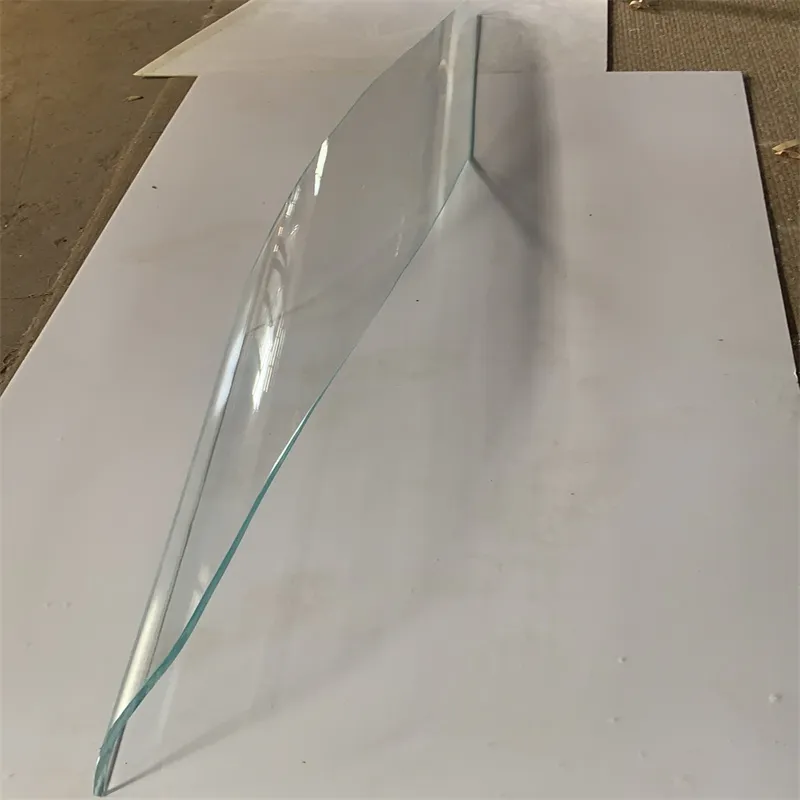Nov . 12, 2024 10:39 Back to list
tinted laminated glass
The Versatility and Benefits of Tinted Laminated Glass
In contemporary architecture and design, materials play a crucial role in shaping not only the aesthetics of a space but also its functionality and environmental performance. Tinted laminated glass has emerged as a popular choice in various applications, ranging from residential buildings to commercial structures. This specialized type of glass offers a blend of safety, energy efficiency, and visual comfort, making it an essential material in modern construction.
Understanding Tinted Laminated Glass
Tinted laminated glass is formed by fusing multiple layers of glass with an interlayer, which is typically made from polyvinyl butyral (PVB). The tinting process involves adding color to the glass during manufacturing. This not only moderates the amount of light that passes through but also enhances privacy without sacrificing visibility. The lamination process adds strength and security, significantly reducing the risk of breakage.
Benefits of Tinted Laminated Glass
1. Energy Efficiency One of the most compelling advantages of tinted laminated glass is its ability to control solar heat gain. The tinting reduces the intensity of sunlight entering a building, leading to lower reliance on air conditioning systems. This is particularly advantageous in warmer climates, where cooling costs can be significant. By minimizing heat gain, tinted laminated glass contributes to a building’s overall energy-efficient performance, potentially qualifying it for green building certifications.
2. UV Protection Ultraviolet rays can cause significant damage to interiors, including fading of furniture, carpets, and artwork. Tinted laminated glass effectively blocks a substantial portion of these harmful UV rays, helping to preserve the integrity and appearance of interior spaces over time. This characteristic makes it an ideal option for spaces that house valuable artifacts or artworks.
3. Enhanced Safety Safety is a paramount consideration in building design. Tinted laminated glass offers added protection against shattering. In the event of breakage, the interlayer holds the glass shards together, preventing them from scattering and reducing the risk of injury. This inherent safety feature makes it an excellent choice for high-traffic areas, commercial buildings, and residences.
tinted laminated glass

4. Noise Reduction In urban settings, noise pollution can be a significant issue. Tinted laminated glass provides excellent sound insulation properties, helping to reduce the level of external noise. The combination of multiple layers of glass and the interlayer materials works together to dampen sounds, contributing to a quieter and more comfortable indoor environment.
5. Aesthetic Appeal Beyond its practical benefits, tinted laminated glass offers aesthetic versatility. It comes in a variety of colors and shades, allowing architects and designers to create visually appealing façades and interiors. Whether it’s a sleek modern office building or a classic residential home, tinted laminated glass can enhance a building’s overall design, making it not only functional but also visually stunning.
6. Customizability Tinted laminated glass can be customized to meet specific needs and preferences. Homeowners and architects can choose the level of tint, thickness, and even the type of interlayer, providing limitless design possibilities. Additionally, it can be cut and shaped to fit various architectural features, making it a versatile choice for diverse applications.
Applications of Tinted Laminated Glass
The applications of tinted laminated glass are extensive. It is widely used in windows, skylights, balustrades, and curtain walls. In commercial settings, it is often utilized for storefronts and office partitions. Its safety, energy efficiency, and aesthetic advantages make it an ideal choice for both residential and commercial projects.
Conclusion
As the demand for sustainable and energy-efficient building materials continues to rise, tinted laminated glass stands out as a superior option. Its unique combination of energy efficiency, safety, UV protection, and aesthetic appeal make it a compelling choice for modern architecture. Whether used in homes, offices, or public spaces, tinted laminated glass enhances the quality of life for occupants while addressing environmental concerns. Investing in this innovative material can not only elevate a building’s design but also contribute to a more sustainable future.
-
Safety and Style with Premium Laminated Glass Solutions
NewsJun.24,2025
-
Reinvents Security with Premium Wired Glass
NewsJun.24,2025
-
Premium Float Glass Line for Modern Architecture
NewsJun.24,2025
-
Low Emissivity Glass for Energy-Efficient Architecture
NewsJun.24,2025
-
High-Performance Insulated Glass Solutions for Modern Architecture
NewsJun.24,2025
-
Elevates Interior Style with Premium Silver Mirror
NewsJun.24,2025
Related PRODUCTS














